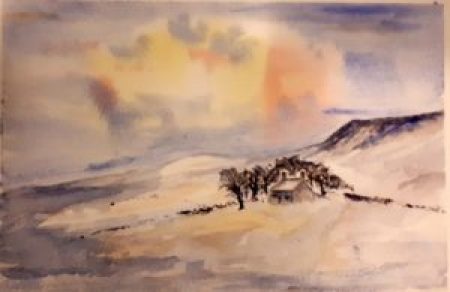Alex Purves made a return visit to give an illustrated talk about artists and critics.
He started with a mention of Vasari, the 16th century artist, architect and who wrote biographies of fellow renaissance artists with a bias in favour of fellow Florentine artists.
The 18th century art market  developed in the salons and at exhibitions. Art markets are very competitive, so most artists rely on critics to enhance their reputation. He mentioned that artists were also often involved in art criticism themselves, sometimes to gain an advantage over their rivals.
developed in the salons and at exhibitions. Art markets are very competitive, so most artists rely on critics to enhance their reputation. He mentioned that artists were also often involved in art criticism themselves, sometimes to gain an advantage over their rivals.
He mentioned that membership of the Royal Academy depended on votes by members who were also artists. They could keep out new artists, especially those with new ideas in a conservative environment. The denial of entry into Paris Salons of the impressionists achieved similar outcomes for a time.

 Mr Purves illustrated many artworks that were the the subject of fierce critiques. Ingres, who painted with a classic precision, was challenged by the loose, colourful style of Delacroix.
Mr Purves illustrated many artworks that were the the subject of fierce critiques. Ingres, who painted with a classic precision, was challenged by the loose, colourful style of Delacroix.

These types of clashes were illustrated by a cartoon showing jousting between the brush and the pen.
He also illustrated and talked about critiques of artists: Degas, Toulouse Lautrec, David and Gericault.
Mr Purves also illustrated controversial work by English painters.
A critic suggested that Constable should use less green and more brown like the old masters, even though he was painting the English countryside.
Turner faced widespread criticism for his later vortex paintings. Even his champion, Ruskin, commenting about his mental state.

A cartoon depicting Turner painting with a mop, summed up contemporary attitudes of established classical artists to his loose style.
Mr Purves also illustrated pre Raphaelite paintings by Millais, Rosetti and Holman Hunt.

One of the most famous artist and critic disputes followed Ruskin commenting on Whistler’s “Nocturne in Black & Gold, falling rocket”, illustrated.
He wrote: ‘I have seen, and heard, much of Cockney impudence before now; but never expected to hear a coxcomb ask two hundred guineas for flinging a pot of paint in the public’s face.’
Whistler decided to sue Ruskin for libel but was only awarded a farthing damages, resulting heavy costs against Whistler. Poor consequences for both.
Critics also commented adversely on Whistler’s “Symphony in White …”, paintings and etchings in Venice and his stark painting of his mother.
“His pictures form a dangerous precedent”

A portrait of Madam X by John Singer Sargent offended critics in Paris. The loose strap was changed in some versions.

Monet’s sketch “Impression of sunrise”, painted in London, was deemed unfinished and heavily criticised.
This painting gave a name to the impressionist movement.
 Mr Purves showed post war images. This period was influenced by followers of the Bauhaus painters, including Victor Pasmore, who changed art school teaching away from its traditional approach.
Mr Purves showed post war images. This period was influenced by followers of the Bauhaus painters, including Victor Pasmore, who changed art school teaching away from its traditional approach.
The photograph is of the “kitchen sink artists”, included John Bratby, showing a kitchen sink painting.
A painting by John Bratby

One severe critic was Winston Churchill who was reputed to have destroyed Sutherland’s portrait of himself.
Lady Churchill is reputed to have destroyed a portrait sketch of him by Walter Sickert.

All new movements attract critics, not least artworks made by poured paint.
A notable comment on modern art appreciation in a New Yorker cartoon lampooned critical commentary:
“His spatter is masterful, but his dribble lacks conviction”
And a final word by an art professional on the subject of art appreciation.
“I don’t know much about art but I know where the gents are”

It was an interesting, illuminating, broad ranging, well illustrated talk by Alec Purves.





































































































